Duck Mallard, scientifically known as Anas platyrhynchos, is a widely recognized and beloved waterfowl species. With its striking appearance and remarkable adaptability, the Mallard has captured the attention of bird enthusiasts and nature lovers around the world. In this article, we will delve into the fascinating world of the Mallard, exploring its physical characteristics, habitat, behavior, and significance in both natural and human environments.
The Duck Mallard’s Physical Appearance
Mallards are medium-sized ducks with a distinct, elegant appearance. Males, known as drakes, have vibrant green heads, white neck rings, chestnut-colored breasts, and gray bodies with black tails. Females, known as hens, have mottled brown plumage, which serves as excellent camouflage. Both genders have bright orange feet and a characteristic iridescent blue patch on their wings.
The mallard (Anas platyrhynchos) is a medium-sized duck with distinctive physical characteristics that make it easily recognizable. Here are some key features of the mallard’s physical appearance:
- Size: Adult mallards typically measure about 20-26 inches (50-65 cm) in length from beak to tail.
Sexual Dimorphism: Male and female mallards exhibit significant differences in plumage, a phenomenon known as sexual dimorphism.
- Male (Drake): The male mallard, often called a drake, has a glossy iridescent green head with a white ring around its neck. The chest is rich chestnut-brown, and the back is grayish. The wings have distinct blue-violet patches, and the tail is dark.
- Female (Hen): The female mallard, also known as a hen, has a mottled brown and tan plumage, which provides excellent camouflage for nesting. She has an orange-brown bill with a darker blotch at the base, and her body is streaked with darker brown.
- Bill: The mallard’s bill is relatively broad and flat, with a slight upward curve. It is adapted for dabbling, a feeding behavior where the duck tips forward in the water to feed on aquatic plants, insects, and small invertebrates.
- Wings: In flight, mallards display distinctive blue-violet wing patches (speculum) bordered by white, which is especially noticeable when the wings are extended.
- Tail: The mallard’s tail is relatively short and typically dark in color.
- Legs and Feet: Mallards have relatively long legs and webbed feet, which aid in swimming. The feet are orange in color.
- Eyes: The mallard’s eyes are dark and positioned on the sides of its head, allowing for a wide field of vision, which is essential for detecting potential predators.
- Behavior: Mallards are highly adaptable and can be found in a variety of wetland habitats, from ponds and lakes to rivers and marshes. They are social birds, often seen in small groups or larger flocks.
- Juveniles: Young mallards, called ducklings, have a more uniform and camouflaged appearance similar to the female. They gradually acquire adult plumage as they mature.
Overall, the mallard’s physical appearance is well-suited for its habitat and behaviors, and it’s striking colors and distinctive features make it a familiar and iconic species in many parts of the world.
Natural Habitat and Distribution
Mallards have a vast natural range, inhabiting wetlands, marshes, ponds, lakes, and rivers across North America, Europe, Asia, and parts of Africa. They are highly adaptable and can thrive in diverse environments, including urban parks and agricultural areas. These waterfowls prefer habitats with calm water and abundant vegetation, providing them with food sources and nesting sites.
Here are some key points about the mallard’s habitat and distribution:
- Wetlands: Mallards are commonly found in a diverse array of wetland habitats, including freshwater environments such as lakes, ponds, rivers, marshes, and swamps. These habitats provide the necessary resources for feeding, breeding, and shelter.
- Northern Hemisphere: The mallard is native to the Northern Hemisphere, with its breeding range spanning North America, Europe, Asia, and parts of North Africa.
- Breeding Grounds: During the breeding season, mallards inhabit various wetland areas in these regions. They often select quiet, secluded spots with ample vegetation for nesting, such as the edges of ponds or marshes.
- Migration: Many mallards engage in seasonal migration, moving between their breeding grounds and wintering areas in search of suitable food and open water. These migration patterns contribute to their extensive distribution.
- Wintering Areas: In the winter, mallards migrate to regions with milder climates and open water. These wintering areas may include lakes, rivers, estuaries, coastal habitats, and even urban ponds that remain ice-free.
- Urban Habitats: Mallards are highly adaptable to human-modified environments, and they can be found in urban and suburban areas with suitable water bodies, such as parks, golf courses, and city ponds.
- Migration Routes: Mallards follow established migration routes known as “flyways.” In North America, these flyways include the Atlantic, Mississippi, Central, and Pacific routes. These flyways guide the movement of many waterfowl species, including mallards, as they travel between breeding and wintering areas.
- Conservation: The mallard’s adaptability to a wide range of wetland habitats has contributed to its overall population stability. However, ongoing conservation efforts are important to protect and restore wetlands, which are vital for the survival of not only mallards but also many other waterfowl and wildlife species.
The mallard’s natural habitat encompasses a variety of wetland environments in the Northern Hemisphere. Where it breeds, feeds, and seeks shelter. Its extensive distribution, adaptability, and migratory behavior make it a familiar and widespread species in diverse landscapes.
Feeding Habits of Mallards
Mallards are omnivorous and have a varied diet. They primarily feed on aquatic plants, seeds, and grasses. Additionally, they consume small invertebrates, insects, mollusks, and crustaceans found in the water. Mallards employ a unique feeding technique known as “dabbling,” where they tip their heads underwater while their bodies remain afloat, reaching for food. This behavior makes them excellent foragers.
Here are some key aspects of the mallard’s feeding habits:
- Dabbling: Mallards are dabbling ducks, which means they feed primarily on the surface of the water or by tipping forward to reach underwater vegetation and small aquatic organisms. They don’t dive deeply like diving ducks but instead feed in shallower waters.
- Omnivorous: Mallards are omnivores, meaning they consume both plant matter and animal material. Their diet varies seasonally and based on what’s available in their habitat.
- Plant Matter: Mallards feed on a wide range of aquatic plants, including seeds, stems, leaves, and aquatic insects. They commonly eat submerged plants such as pondweeds, wild rice, and milfoil.
- Invertebrates: In addition to plants, mallards actively feed on various aquatic invertebrates, such as insects, snails, crustaceans, and small mollusks. They use their specialized bills to filter and sieve out these small organisms from the water.
- Feeding Locations: Mallards can be seen foraging along the edges of water bodies, where they can easily access both aquatic plants and the insects associated with such habitats. They may also feed in shallow waters, often with their tails up and heads submerged.
- Grain and Human Food: In some areas, mallards have become accustomed to feeding on grains, seeds, and bread provided by humans in urban and suburban environments. However, this practice is discouraged, as it can lead to nutritional imbalances and health issues for the ducks.
- Feeding Behavior Changes: Mallards may adjust their feeding behavior based on seasonal changes in food availability. During the breeding season, they may focus more on protein-rich animal matter to support reproduction, while in the winter, they may rely more on plant material.
- Social Feeding: Mallards are social birds, often seen feeding in small groups or larger flocks. Feeding in groups can provide safety and increase their efficiency in locating food.
Understanding the mallard’s feeding habits is essential for managing and conserving their habitats. Ensuring the availability of a diverse range of natural foods in wetland ecosystems is crucial for the health and survival of mallard populations, as well as many other waterfowl species that share similar habitats.
Mallard Duck Breeding and Reproduction
During the breeding season, Mallards form monogamous pairs that last for a single nesting season. The courtship displays of drakes involve impressive head movements, whistles, and quacks to attract hens. The female builds her nest on the ground, often hidden in tall grass or dense vegetation near water bodies. A typical clutch consists of 8 to 13 eggs, which the female incubates for approximately 28 days. Once hatched, the ducklings follow their mother to nearby water within a day.
Here’s an overview of mallard breeding and reproduction:
- Breeding Season: The breeding season for mallards typically begins in late winter or early spring, with the exact timing varying based on local climate and habitat conditions.
- Pair Formation: Male mallards, known as drakes, engage in courtship displays to attract female mallards, called hens. Pair formation often occurs in wintering areas or during the migration to breeding grounds.
- Nesting Sites: Mallards prefer nesting sites near water, such as the edges of ponds, lakes, marshes, and other wetland habitats. The hens seek quiet, concealed locations with ample vegetation for nesting.
- Nest Construction: The female builds the nest using surrounding vegetation, such as grass, reeds, and leaves. She lines the nest with down feathers from her own body, providing insulation for the eggs.
- Egg-Laying: The hen lays a clutch of eggs, typically ranging from 8 to 13 eggs, with each egg laid one day apart. The eggs are usually pale greenish or buff-colored.
- Incubation: Once the clutch is complete, the hen begins incubating the eggs. Incubation lasts about 26 to 28 days. During this time, the female rarely leaves the nest and relies on her cryptic plumage for camouflage.
- Hatching: The eggs hatch around the same time, usually within 24 hours of each other. The newly hatched ducklings are precocial, meaning they are relatively independent and can feed themselves shortly after hatching.
- Care of Ducklings: The hen leads her ducklings to water soon after hatching, where they begin to feed on small aquatic organisms and vegetation. The hen continues to protect and care for her brood, guiding them to suitable feeding areas and providing warmth.
- Predator Protection: The mother mallard is vigilant and protective of her ducklings, often leading them to hide in dense vegetation to avoid predators.
- Fledging: Mallard ducklings grow rapidly and develop their flight feathers within a few weeks. Once they are capable of flight, the hen leads them to larger water bodies, where they learn essential skills for survival.
- Reproductive Success: Mallards have a high reproductive potential, but many factors, such as predation, habitat availability, and food availability, influence the survival of ducklings to adulthood.
Understanding the breeding and reproductive behaviors of mallards is essential for managing their populations and conserving suitable nesting and wetland habitats, which are crucial for the success of this iconic duck species.
Social Behavior of Mallards
Mallards exhibit complex social behavior, forming flocks that can range from a few individuals to several hundred ducks. They engage in various social interactions, including synchronized courtship displays, preening, and head-bobbing. The flock dynamics are influenced by a hierarchy, with dominant individuals asserting their authority. Mallards are known to engage in playful activities, such as splashing in water or taking short flights.
Migration Patterns
While Mallards are largely sedentary birds, many populations exhibit migratory behavior. In North America, Mallards breeding in northern regions migrates southward during the winter, seeking milder climates and open water. These migratory journeys can cover vast distances and often involve stopovers in wetlands and other suitable habitats along the way.
Here are some key points about the migration patterns of mallards:
- Seasonal Migration: Mallards exhibit both north-south and altitudinal migration, moving between breeding and wintering grounds.
- Breeding Grounds: Mallards breed across North America, Europe, Asia, and parts of Africa. They prefer freshwater habitats such as wetlands, ponds, and marshes.
- Fall Migration: In the fall, mallards from northern breeding areas, such as Canada and northern parts of the United States, migrate south to warmer regions in the southern U.S., Mexico, and Central America.
- Wintering Areas: Mallards often spend the winter in areas with milder climates, where water bodies remain open and provide suitable feeding grounds. These wintering areas include lakes, rivers, estuaries, and coastal regions.
- Migration Routes: Mallards follow established migration routes known as “flyways.” In North America, there are four primary flyways: the Atlantic, Mississippi, Central, and Pacific. These flyways guide the movement of many waterfowl species, including mallards, as they travel between breeding and wintering areas.
- Nocturnal Migration: Mallards are known to migrate at night, using the stars and other celestial cues for navigation. This helps them avoid predators and take advantage of cooler, calmer air.
- Mixed Populations: Some mallards are non-migratory or exhibit only partial migration. These ducks might stay in regions with relatively mild winters if suitable food and open water are available.
- Return Migration: As spring arrives and temperatures rise, mallards return to their breeding grounds, where they find suitable nesting sites and abundant food resources.
- Migratory Behavior Variability: The timing and distance of mallard migrations can vary greatly based on regional conditions, including weather patterns, food availability, and human disturbances.
- Conservation Implications: Understanding mallard migration patterns is essential for conservation efforts, as it helps identify critical stopover sites, protect habitats along flyways, and ensure the availability of suitable breeding and wintering grounds.
Overall, mallards’ migration patterns are complex and influenced by a combination of environmental and biological factors, making them a fascinating subject of study for ornithologists and conservationists.
Duck Mallards and Human Interaction
Duck Mallards have a long history of interaction with humans. Due to their adaptability, they frequently inhabit urban parks, ponds, and lakes, where they can become accustomed to human presence. Many people enjoy feeding and observing Mallards, making them a familiar sight in recreational areas. Additionally, Mallards have been domesticated for centuries, providing a source of food and entertainment through duck farming and hunting.
Conservation Efforts for Mallards
Mallards are not considered a threatened species, and their populations remain stable globally. However, the degradation and loss of wetland habitats pose threats to their long-term survival. Efforts are underway to protect and restore wetlands, which benefits not only Mallards but also other waterfowl species and the overall ecosystem. Conservation organizations work towards preserving these important habitats and raising awareness about the significance of Mallards in the natural world.
- Habitat Preservation: Protect and restore wetlands, ponds, and marshes that serve as crucial breeding and nesting areas for mallards.
- Regulation and Monitoring: Enforce hunting regulations to prevent overharvesting, and monitor population levels to ensure sustainable hunting practices.
- Nesting Boxes: Install and maintain nesting boxes in suitable locations to provide safe breeding sites, particularly in areas with limited natural nesting sites.
- Predator Management: Implement measures to control predators (e.g., foxes, raccoons) that pose a threat to mallard nests and ducklings.
- Water Quality: Improve and maintain water quality in habitats used by mallards, reducing pollution and contaminants.
- Public Awareness: Educate the public about the importance of conserving mallards and their habitats, encouraging responsible behavior near water bodies.
- Research: Conduct research on mallard behavior, migration patterns, and habitat requirements to inform effective conservation strategies.
- Collaboration: Work with government agencies, conservation organizations, and local communities to coordinate efforts and leverage resources.
- Climate Resilience: Address the impacts of climate change on mallard habitats, identifying strategies to help these birds adapt to changing conditions.
- Invasive Species Management: Control and manage invasive species that compete with mallards for resources or disrupt their habitats.
Duck Mallards in Folklore and Art
Throughout history, Duck Mallards have delighted human imagination and found their place in folklore, literature, and art. These graceful birds have symbolized various meanings across different cultures. In folklore, they often represent fidelity, love, and resilience. Mallards frequently appear in paintings, sculptures, and poetry, highlighting their beauty and connection to nature.
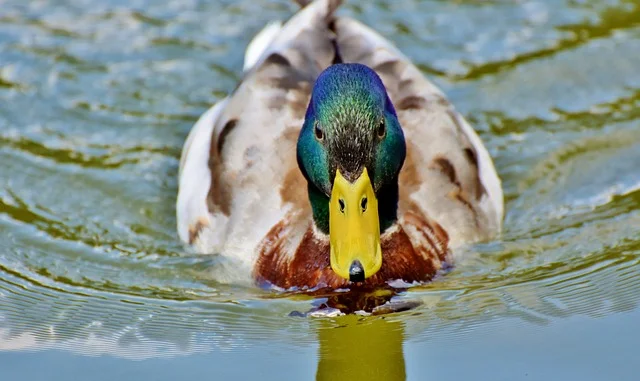
Interesting Facts about Mallards
Fact 1: Global Distribution
The Mallard (Anas platyrhynchos) is widely distributed across the Northern Hemisphere. It can be found in diverse regions, including North America, Europe, Asia, and even parts of Africa.
Fact 2: Familiar Appearance
Mallards are easily recognizable due to their vibrant plumage. Male Mallards, known as drakes, have a glossy green head, a yellow bill, and a chestnut breast. Females, or hens, possess mottled brown feathers that provide excellent camouflage.
Fact 3: Versatile Habitat
These adaptable water birds can thrive in various aquatic habitats, such as lakes, ponds, marshes, rivers, and estuaries. They can also adapt to urban environments, including parks and golf courses.
Fact 4: The Quack Sound
The quintessential quacking sound associated with ducks is primarily produced by female Mallards. Males, however, emit softer and quieter calls.
Fact 5: Winged Travelers
Mallards are known for their migratory habits, with many populations undertaking extensive journeys between breeding and wintering areas. These migrations can span thousands of miles.
Fact 6: Courtship Displays
During courtship, male Mallards perform impressive displays to attract females. This includes head-bobbing, tail-wagging, and a variety of vocalizations.
Fact 7: Nesting Preferences
Mallards build nests on the ground, typically concealed in dense vegetation near water bodies. The female carefully arranges grass and down feathers to provide a warm and cozy nest for her eggs.
Fact 8: Egg Laying
A female Mallard typically lays a clutch of 8-13 eggs. The eggs are usually creamy white or greenish and require an incubation period of around 26-28 days.
Fact 9: Precocious Ducklings
Mallard ducklings are remarkably independent from an early age. They leave the nest soon after hatching and can swim and feed themselves within hours.
Fact 10: Omnivorous Diet
Mallards have a diverse diet, feeding on aquatic plants, seeds, insects, crustaceans, small fish, and even carrion. Their versatile feeding habits contribute to their adaptability and survival.
Fact 11: Social Behavior
Mallards are social birds and often gather in flocks, especially during the winter months. They display hierarchical behavior, with dominant males asserting their authority.
Fact 12: Hybridization
Mallards can hybridize with other duck species, resulting in unique offspring. These hybrid ducks can display a wide range of characteristics and variations in plumage.
Fact 13: Feathers and Waterproofing
Mallards possess specialized feathers that help keep them buoyant and dry. The intricate structure of their feathers, combined with a secretion from the preen gland, enables them to maintain waterproof plumage.
Fact 14: Lifespan and Survival
The average lifespan of a Mallard in the wild is around 5-10 years. However, some individuals have been known to live for more than 20 years.
Fact 15: Conservation Status
The Mallard is not considered a globally threatened species. However, localized threats such as habitat loss, pollution, and hunting can impact specific populations.
Fact 16: Adaptive Behavior
Mallards have shown remarkable adaptability to human-made environments. They can often be seen foraging in urban areas, including city parks and residential ponds.
Fact 17: Flying Abilities
Mallards are agile fliers, capable of reaching speeds up to 55 mph (89 km/h) during migratory flights. Their strong wing muscles enable them to undertake long-distance journeys.
Fact 18: Socializing in Winter
During the winter, Mallards form large flocks, creating a mesmerizing sight as they gather together on bodies of water.
Fact 19: Disease Resistance
Mallards have developed a natural resistance to several diseases, including avian influenza. They can act as carriers of the virus without experiencing severe symptoms.
Fact 20: Cultural Significance
The Mallard holds cultural significance in various societies. It has been featured in art, literature, folklore, and even as a popular character in animated films.
Fact 21: Ecological Importance
Duck Mallards play a vital role in wetland ecosystems. They help control populations of insects and other invertebrates while also serving as a food source for larger predators.
Conclusion
The Duck Mallard, with its stunning appearance and remarkable adaptability, is a captivating waterfowl species. From their physical features and feeding habits to their social behavior and migratory patterns, Mallards continue to fascinate bird enthusiasts worldwide. Their presence in both natural and human-altered environments reminds us of the delicate balance between wildlife and our actions. By appreciating and protecting these magnificent ducks, we can ensure their continued existence for generations to come.
FAQs
How can I differentiate between a male and a female Mallard?
Male Mallards have vibrant green heads, while females have mottled brown plumage.
Are Mallards found on all continents?
Mallards are distributed across North America, Europe, Asia, and parts of Africa.
Do Mallards migrate long distances?
While some populations are migratory, many Mallards are sedentary and remain in their habitats year-round.
Can Mallards fly at high speeds?
Yes, Mallards are capable of flying at speeds of up to 55 miles per hour.
What do Mallards eat?
Duck Mallards have an omnivorous diet, including aquatic plants, seeds, insects, and small invertebrates.
Is Mallard ducks a pet bird?
Yes, Mallard ducks can be kept as pets. However, it’s important to note that Mallards are primarily wild ducks, and raising them as pets requires proper care, knowledge, and a suitable environment that mimics their natural habitat. Additionally, some areas may have regulations regarding the ownership of Mallard ducks, so it’s essential to research and comply with local laws and regulations.



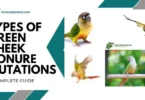
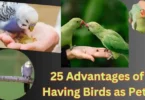
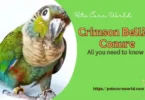
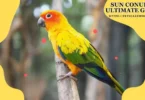
Leave a Comment
You must be logged in to post a comment.